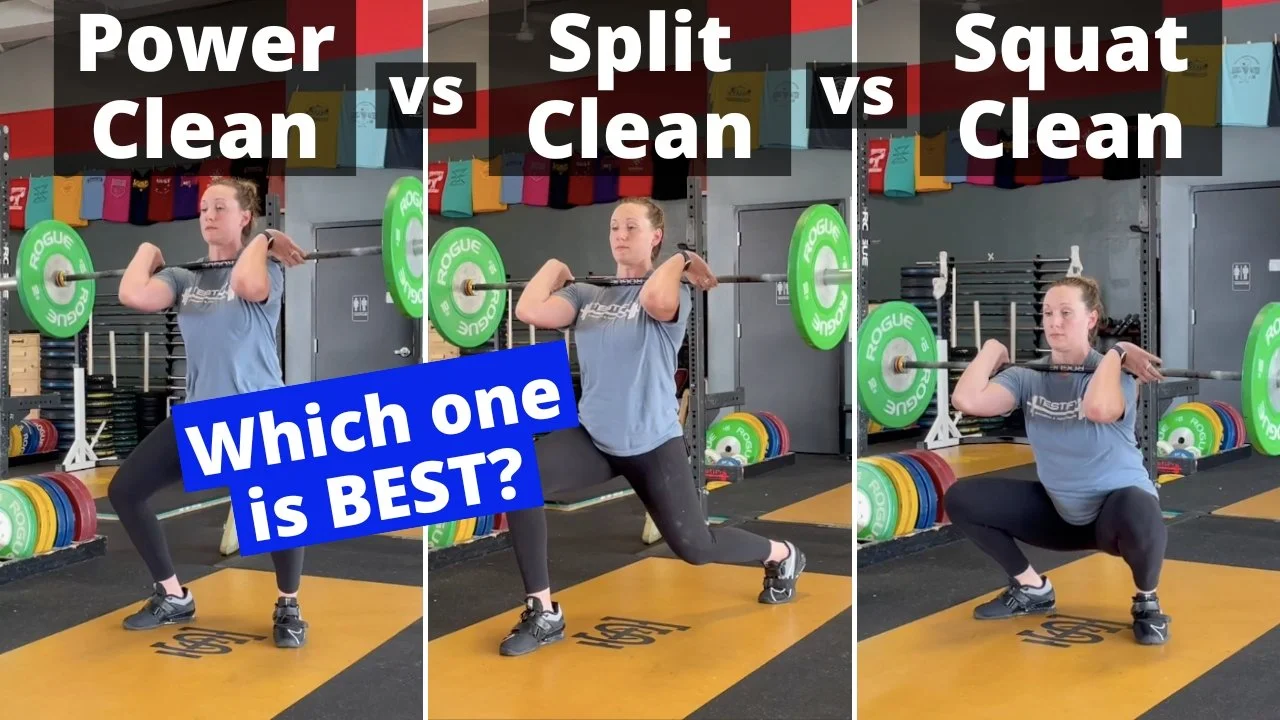This Simple Tactic Fixed His Squat & Deadlift in One Rep
/How can a cue actually help improve every lift?
Let’s dive in.
What Aspect of a Lift Does This Cue Help?
Today’s cue is useful at the beginning of the lift. It can be used over a broad range of lifts - from squats to deadlifts to bench presses to snatches - but it is specifically useful to address technical issues present at the start of the lift.
figure 1: becky demonstrates the error of breaking at the hips before before the knees at the start of the squat.
Here are a few examples of when today’s cue could be useful:
In the squat, you tend to break (i.e., bend) at the hips before the knees as you start your descent (Figure 1) instead of bending the hips and knees simultaneously.
In the deadlift, you try to yank or jerk the barbell off the floor (which causes all manner of problems).
In the bench press, you pop your shoulders and the bar slightly upward before starting each rep’s descent.
In the press, you “wind up your hips” and reach backward with your hips before pushing them forward at the start of the rep.
In the snatch, you have the same problem as in the deadlift, and you try to yank the bar off the floor (instead of accelerating it smoothly).
The Solution
The cue is simply “Smooth start.”
As with many solutions, this may seem a bit underwhelming, but the execution of it is both important and potentially profound in terms of its impact on your lifting, so let’s discuss how this applies to the errors above.
figure 2: becky correctly bends the hips and knees simultaneously as she starts her descent.
Squat: Cueing “smooth start” or even “slow start” allows you to focus on simultaneously bending both the knees and hips as you initiate the descent (Figure 2). Remember that this is a cue for the first few inches of the lift’s movement, and that’s where this simultaneous movement needs to happen in the squat.
Deadlift: You now are focused on pulling smoothly and not trying to yank the bar off the floor. This allows you to keep your back rigid and pull in a nice, vertical path.
Bench Press: The error of “popping” the shoulders up before starting the descent tends to be a quick movement, so cueing “smooth start” helps eliminate this bench press twitch.
Press: “Slow start” can again be a useful variation of the “smooth start” cue as both cues will tend to slow you down a bit at the start, and this allows you to focus on only pushing the hips forward (and thus not allowing them to move back).
Snatch: As with the deadlift, cueing “smooth start” encourages you to gradually accelerate the bar at the start of the pull instead of jerking the bar off the floor. The “slow start” variation of today’s cue can work when learning how to snatch and clean, but this cue usually needs to be abandoned as the weights get heavier, whereas “smooth start” remains useful at all weights.
Be sure to watch the included video (click here or scroll up) to see this cue in action, and as always, we hope this helps you get stronger and live better.
-Phil
PS: Whenever you want even more Testify in your life, here are some free resources:
Book a free intro and strategy session with us HERE.
Pick up a free copy of Testify’s Squat Guide: 12 Tips to Improve Your Squat Now HERE.
Get our free weekly email - containing useful videos, articles, and training tips - HERE.
Follow Testify on Instagram HERE.
Subscribe to Testify’s YouTube channel HERE.
(Some links may be affiliate links. As an Amazon Associate, Testify earns from qualifying purchases.)















